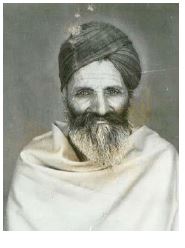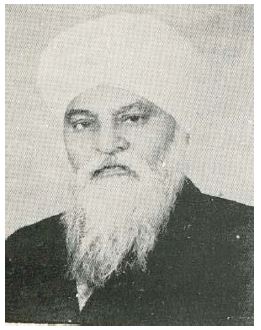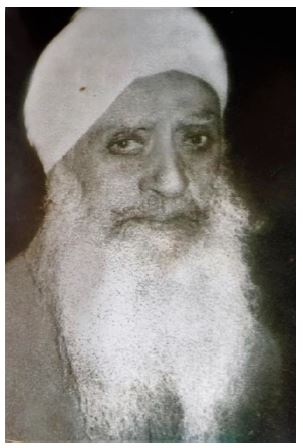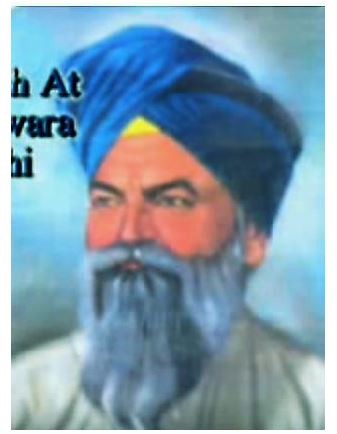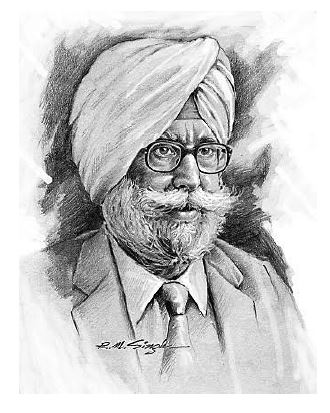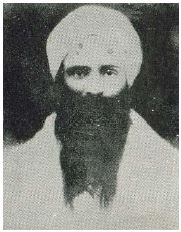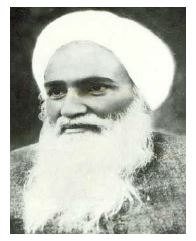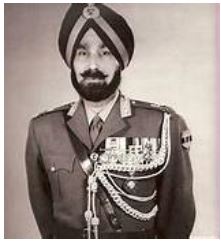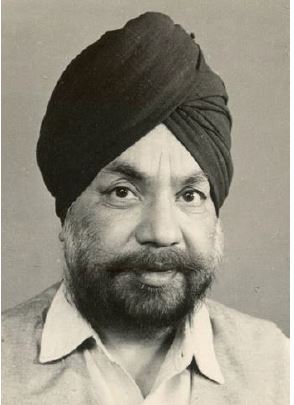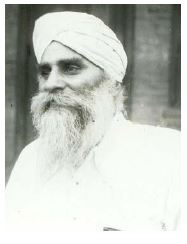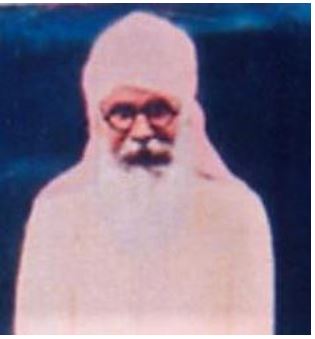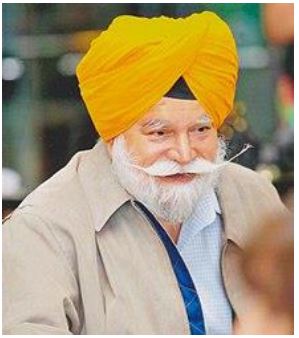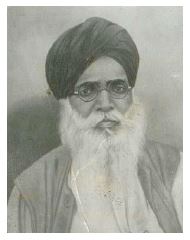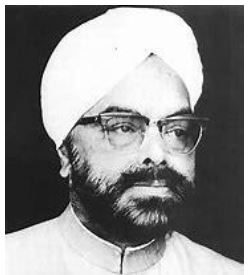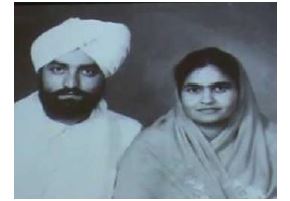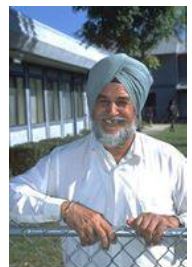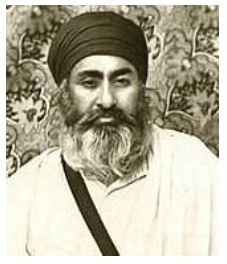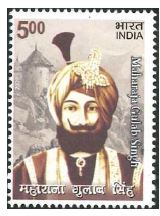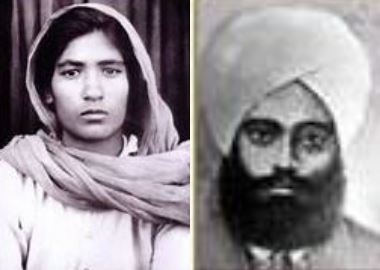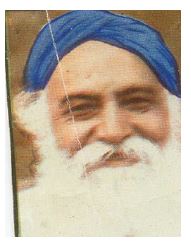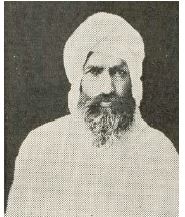
Professor Gurmukh Singh (15.4.1849 – 24.9.1898), son of Bhai Basawa Singh, was born at village Chandharh (district Gujranwala). For some time Bhai Baswa Singh served as cook of (Maharaja) Sher Singh. After the murder of (Maharaja) Sher Singh he moved to Kapurthala and joined service with Raja Nihal Singh, the ruler of Kapurthala. After the death of Raja Nihal Singh Bhai Basawa Singh served Raja Randhir Singh and Kanwar Bikram Singh. It was here that (Prof.) Gurmukh Singh was born. In spite of poverty, his parents sent him to college. In 1877, he was appointed as assistant teacher of Punjabi at Oriental College Lahore (later Punjab University). (In 1881 he became Assistant Professor. Since then he came to be known as Professor). On November 2, 1879, the Singh Sabha Lahore was established. He was one of the founders of this organization. He was selected secretary of the Sabha. In 1880, he started a newspaper named Gurmukhi Akhbar and a journal named Vidyarak. Professor Gurmukh Singh was a forceful and intelligent writer. Professor Gurmukh Singh wrote a couple of books too, including Bharat Da Itihas, Gurbani Bhavarth, Gur Baras.
He was a very candid person. He spearheaded the movement to stop sacrilege of Gurdwaras by those who were in direct line of Guru Sahib (Guru Sahib had rejected their children as their successors-in-mission; hence hereditary right to religious and social status was over-ruled by Guru Sahib). The prominent among such persons, who wished to claim special status, was Khem Singh Bedi. Soon the Singh Sabha was split. On April 11, 1886, this group formed Khalsa Diwan Lahore. Maharaja Hira Singh Nabha was selected as the president and Professor Gurmukh Singh was selected as the secretary of the Diwan.
On March 18, 1887, the Nirmala-Udasi group of Singh Sabha Amritsar managed to issue an order, in the name of a so-called Hukamnama from Akal Takht Sahib, excommunicating Professor Gurmukh Singh. This so-called Hukamnama was supported by Bikram Singh (ruler of Faridkot), Dr. Charan Singh (father of Bhai Vir Singh) etc. On the other hand, most of the Singh Sabhas stood
by Professor Gurmukh Singh. On April 12, 1887, 19 Singh Sabhas condemned issuing of so-called Hukamnama against Professor Gurmukh Singh.
On May 8, 1897, Professor Gurmukh Singh’s benefactor Kanwar Bikram Singh died. In spite of this, he continued serving the nation with former spirit.
Professor Gurmukh Singh was one of the major organisers of Khalsa College Establishment Committee. He collected large sums of money for this College. Atar Singh Bhadaur, the president of the Khalsa Diwan Lahore, died on June 10, 1896. Now, Professor Gurmukh Singh had to do much more work. It affected his health but he did not bother and continued his activities.
In September 1898 he went to Chail to get some financial help for the Khalsa Diwan Lahore from Maharaja of Dhaulpur. When he was on his way back, he fell ill. He broke his journey at Kanda Ghat. After a couple of days he planned to leave for Ambala on September 24. On the night of September 23, he continued working till late night. He died the same night. Professor Gurmukh Singh had married twice, but no child was born to either of his wives.
Professor Gurmukh Singh also had negative side of his life. When Bhai Nihal Singh published Khurshid Khalsa, a book, which supported (Maharaja) Dalip Singh’s claim to the kingdom of the Punjab and (the book) also thanked Bhai Thakar Singh Sandhanwalia for his services for the cause, Professor Gurmukh Singh expelled Bhai Nihal Singh from Lahore Singh Sabha. Professor Gurmukh Singh also expelled Diwan Buta Singh because he had published Punjabi version of a book about Dalip Singh’s claim to the kingdom of the Punjab.
He (Professor) was also opposed to the electrification of Darbar Sahib.
It was he who tried to change the date of birth of Guru Nanak Sahib from Katak Pooranmaashi (20-10-1469) to Visakh (15-4-1469); but the Sikh Panth did not accept his date and continued celebrating Guru’s birthday in Katak.
(Dr. Harjinder Singh Dilgeer)
